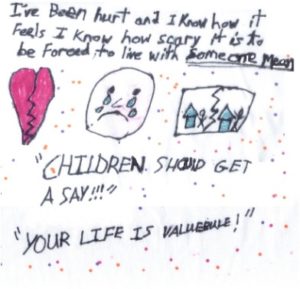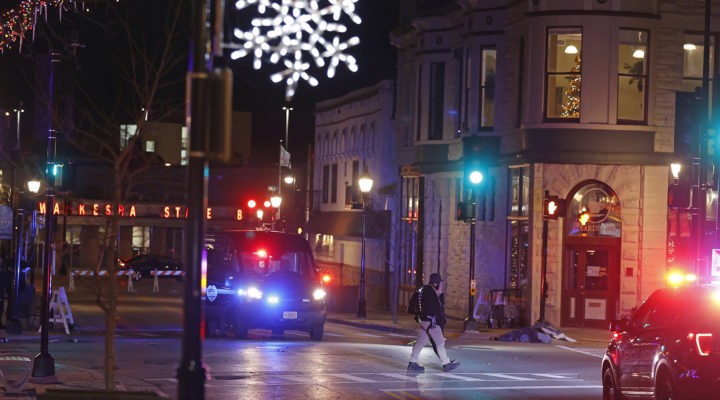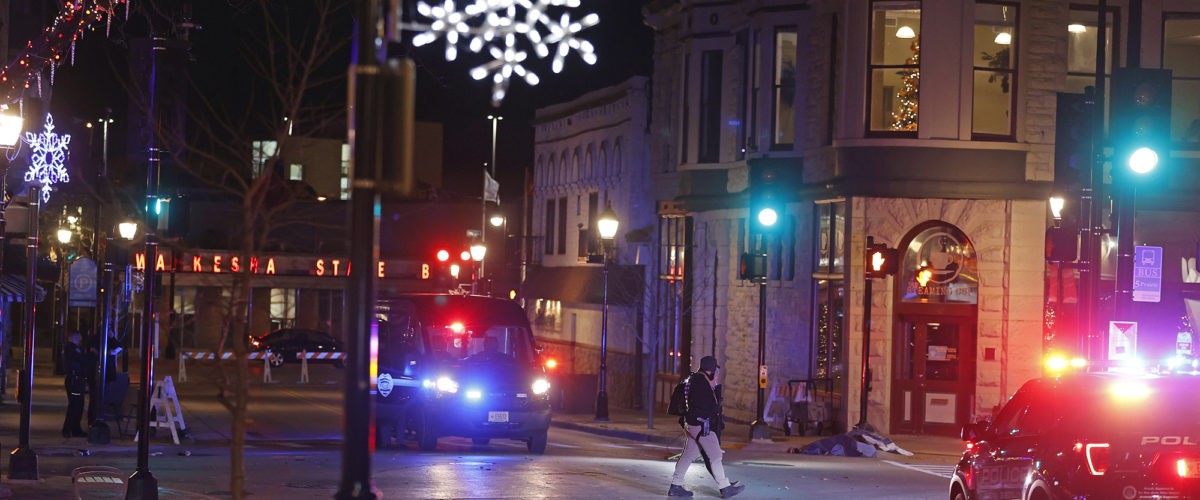Authorities ask that, too: “What is the motive for this?”

Kathy Manis Findley
I can’t help but think of the question Peter asked a crowd of people who were “filled with wonder and amazement” after witnessing a true and miraculous healing. Certainly, Peter’s story was not a similar scenario with the Wisconsin tragedy. Instead, Peter’s question is much more appropriate than simply asking “Why?” Peter’s miracle story goes like this:
One day Peter and John were going up to the temple at the hour of prayer, at three o’clock in the afternoon. And a man lame from birth was being carried in … . Peter said, “I have no silver or gold, but what I have I give you; in the name of Jesus Christ of Nazareth, stand up and walk.” And he took him by the right hand and raised him up; and immediately his feet and ankles were made strong. Jumping up, he stood and began to walk, and he entered the temple with them, walking and leaping and praising God. All the people saw him walking and praising God. (Acts 3:1-2; 6-9)
After this part of Peter’s story, he asked the crowd that critical question, “Why do you wonder at this?”
Today, why do we wonder at the tragic scene of a red SUV racing down the street in the middle of a parade and eventually mowing down a marching band of children? Why do we wonder at this? Why do authorities ask, “What’s the motive?”
Here’s what we know so far. At least five people are dead and more than 40 others are injured. Officials with Children’s Wisconsin hospital in Milwaukee said midday Monday that they are treating 18 children who were injured, 10 of whom are in the intensive care unit.
“Why do we wonder while our judicial justice system persists in releasing perpetrators of domestic violence and abuse?”
Why do we wonder? After all, the person of interest, Darrell Brooks, has a criminal history in Wisconsin dating back to 1999, and he had been released on a bond of only $1,000 in connection with a domestic abuse case just two days earlier. Brooks also faces felony charges for recklessly endangering safety and for possession of a firearm while convicted of a felony. Apparently, his criminal record goes back decades.
It is past time for our judges to take a harder look at violent criminals and consider the consequences of releasing them into the public. Violent offenders almost always are repeat offenders who commit violent crimes over and over and over again.
Why do we wonder while our judicial justice system persists in releasing perpetrators of domestic violence and abuse? Why do we wonder when perpetrators of domestic abuse continue to commit horrific crimes?
I ask because I am well acquainted with the dynamics of domestic violence and family violence. During my long career as a victims advocate, trauma counselor and child forensic interviewer, I can attest to the volatility and danger posed by persons who would harm their spouses and their children. The criminal justice system often fails to charge perpetrators of domestic abuse, and the judicial system almost always releases perpetrators while victims are “protected” by a protective order that’s worth little more than the paper it’s printed on. I do not — I cannot — forget the women and children I have known who suffer the long-term effects of violence and abuse.
 Although it has been well over a decade, I have not forgotten my emotional reaction when a child I was counseling gave me this drawing. The child, as well as the child’s mother and siblings, lived with the evil of violence at the hands of a cruelly abusive father. Not only did the father avoid charges many times, he also was set free by a judge who empowered him to continue the deep harm he was inflicting upon his wife and children. The same judge eventually granted him sole custody of his children and ruled that the mother could not see her children at all.
Although it has been well over a decade, I have not forgotten my emotional reaction when a child I was counseling gave me this drawing. The child, as well as the child’s mother and siblings, lived with the evil of violence at the hands of a cruelly abusive father. Not only did the father avoid charges many times, he also was set free by a judge who empowered him to continue the deep harm he was inflicting upon his wife and children. The same judge eventually granted him sole custody of his children and ruled that the mother could not see her children at all.
You can’t make this stuff up! I saw it happen again and again in this family and in other families.
Back to the question at hand. Why do we wonder why violence occurs? I do not want to pick on Wisconsin at all, especially during this tender time. I simply want to point out what should be obvious to everyone asking questions. In 2021, one domestic violence-related death occurred every five days in Wisconsin — 60 deaths — a record year. An article from the Post Crescent reports these chilling statistics:
Fifty-eight victims, along with two perpetrators killed by police, add up to the highest number of domestic violence homicides recorded in Wisconsin since at least 2000. In total, 68 people, including both victims and perpetrators, lost their lives last year due to domestic violence.
Of course, Wisconsin is not alone. Many other states report similar statistics, and yet we are surprised when someone who has committed violence at home commits random acts of violence in the community.
When we bring this closer into our own circles of influence, the scenarios I witnessed over the years tell a similar story. “Why did you go back to him?” I asked her as I examined the bruises all over her body. “My pastor told me that with prayers, I would be safe.”
“It’s past time for us to use our will to end cycles of violence when we see them.”
And then there is my most heartbreaking scenario of all that tells of a couple, both very committed to their church, who received counsel from their pastor to stick it out. The next day, after a terrible beating, the wife went back to the minister to say she has to leave because she fears for her life. I must tell you that this minister was a long-time prominent minister in the community, respected and loved by everyone. Nevertheless, he advised her to try it one more time. The next day, her husband — an active church leader — beat her to death.
The point is that we are all influencers, of our ministers and of our criminal justice and judicial systems. As such, it’s time for our voices to influence their actions and decisions. It’s time for us to know the domestic violence statistics in our communities and it’s time for us to advocate for victims.
It’s past time for us to use our will to end cycles of violence when we see them. It’s time for us — for people of faith — to advocate for victims and insist on justice for abusers. It’s time for people of faith to bridge the many societal and social gaps that allow domestic violence to occur and to then spill over into community violence. If we believe that the police, the judges and the shelter programs can handle it without our help, we are very wrong.
Why should we wonder why community violence devastates our communities when we fail to prevent violence when it happens within families and when we fail to detain the violent offenders and protect the victims, even the child victims?
Kathy Manis Findley is an ordained Baptist minister with Greek Orthodox roots. Now retired in Macon, Ga., she spent her 38-year ministry serving as a pastor, hospital chaplain, trauma counselor and missionary to Uganda. She is a graduate of Southern Baptist Theological Seminary and is certified in victimology, trauma intervention and child forensic interviewing. She is the author of two serious books, Voices of our Sisters and The Survivor’s Voice: Healing the Invisible Wounds of Violence and Abuse, and just for fun, one Kindle novel.
Related article:
Family violence: an injustice that churches must address | Opinion by Kathy Manis Findley


